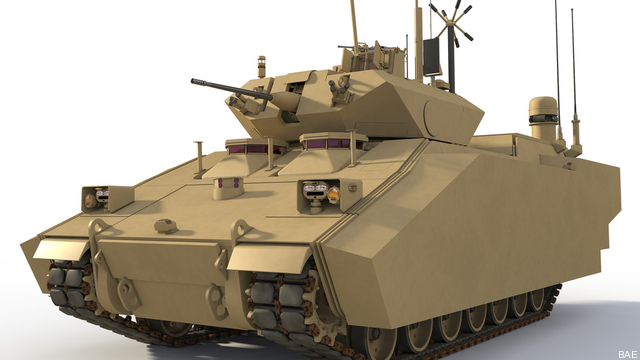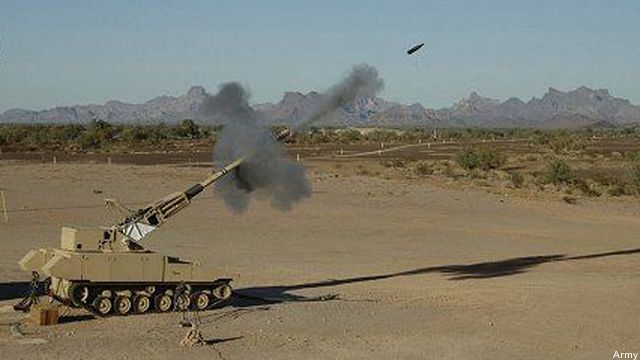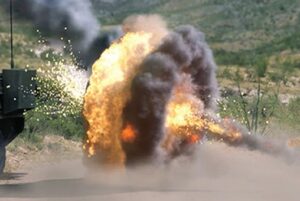The Long Road To Army’s Next-Gen Combat Vehicle
Posted on

BAE’s design for the canceled Ground Combat Vehicle
ARLINGTON: Two years after the demoralizing cancellation of the Ground Combat Vehicle, the Army is rallying round a new vision for its future armored force. That vision has come into sharper focus just in the last few months, armor leaders said Tuesday. Facing a rising Russia with an aging American arsenal, the Army will keep upgrading its 1980s-vintage M1 Abrams tanks and M2 Bradley armed transports as long as it can. In parallel, it will develop a Next Generation Combat Vehicle set to enter service in 19 years, in 2035.
Click to read why the Army needs an all-new war machine
At a recent quarterly meeting of Army doctrine, acquisition and research officials in Detroit, “we all said, OK, we all have to agree that we can no longer get out of our existing combat vehicles what we’re going to need in the foreseeable future,” Lt. Gen. H.R. McMaster told an Association of the US Army conference Tuesday. “So what we need to do is continue to improve what we have, certainly, but we need to really put a lot of energy into and look for opportunities to start a Next Generation Combat Vehicle as soon as possible.”
Why start ASAP on a 2035 deadline? Given the technologies the Army wants to incorporate — from robotics to advanced armor materials — and the slow pace of defense procurement, it actually isn’t a lot of time.
“To be fielding in ’35, (we) have to have some decisions in ’25-’26, which means we’re late to need right now,” Maj. Gen. Eric Wesley, commander of the Fort Benning Maneuver Center Of Excellence, said at the conference.

Maj. Gen. Eric Wesley
“The majority of the hard work…is going to have to be done before 2025, because it’s going to take ten years for industry to actually build and field what we want,” said Col. William Nuckols, who works for Wesley as director of mounted (i.e. vehicle) requirements. The plan calls for “four solid years of analysis” from 2017 through 2020, he said, in parallel with “very focused” research on the required science and technology.
“Have we properly focused the S&T community up to this point?” Nuckols said. “My opinion is, clearly not.”
Why not? Frankly, armored vehicle development had become demoralized and directionless after two decades of failures. The Crusader program tried to replace the Vietnam-vintage M109 howitzer; it got canceled in 2002 for being too heavy. The ambitious Future Combat System tried to pack the combat power of a 70-ton tank in a 20-30 ton platform; it got canceled in 2009 for being too light. The Ground Combat Vehicle overcorrected in the opposite direction and proposed replacing the 30-40 ton M2 Bradley troop carrier with a 64-84 ton fortress on tracks; it got canceled — for being too heavy — in January 2014. Ironically, just a month later, the Russians invaded Crimea and the specter of armored blitzkrieg menaced Europe once again.
When GCV died, the Army started a new effort called Future Fighting Vehicle, but it was basically a placeholder. I rarely heard even a passing mention of it in all my interactions with the Army, its contractors, and the experts who study it. On paper, FFV was vaguely defined long-term R&D effort “eventually replacing the Bradley,” according to the 2015 Combat Vehicle Modernization Strategy, which also warned the program might not be affordable.
The new concept is less constrained. “We wanted to stretch people’s minds beyond just an Infantry Fighting Vehicle…that would follow the Bradley,” said Wesley. (IFV is the military term of art for a well-armed and armored troop transport that can not only carry infantry but fight the enemy on its own, like the US Bradley, the German Puma, or the Russian BMP).
“The Next Generation Combat Vehicle might be an Infantry Fighting Vehicle, but it might be a single combat vehicle that replaces the Abrams, the Bradley, potentially the MPF (light tank) and even the Stryker (wheeled armored vehicle),” said Nuckols. “It could be a family of vehicles very similar to the original FCS program.”

The canceled FCS artillery vehicle
FCS, along with Crusader and Comanche, is a name of ill omen in the Army, and McMaster insisted the service would avoid its past mistakes. For one thing, FCS bet on technological breakthroughs that failed to materialize on a tight schedule. The Next Generation Combat Vehicle plan is to mature technologies by 2025, 10 years before fielding.
Several promising technologies will be ready well before then, Bryan Cheeseman, materiel manufacturing and technology chief at the Army Research Laboratory, believes. New composite armor materials now in development should reach Technological Readiness Level 6 — i.e., having a prototype tested in a realistic environment — “in the next 18 months or so,” he told the AUSA conference. High-efficiency transmissions and a drone-killing 50 mm cannon should also be ready in 2019, he said.
Some new technologies can and will be retrofitted onto Abrams and Bradleys. Some can’t. Protection is a great example, especially since anti-tank missiles are becoming more powerful, more sophisticated, and more widely available around the world:
- Layering new armor materials on top of old ones soon reaches diminishing returns in terms of how much weight you’re adding for each added increment of protection. (FCS had the brilliant idea of modular armor where you could replace old plates with new one to repair battle damage or upgrade to superior materials). Sooner or later — sooner, with the 70-ton M1 tanks — the uparmored vehicle becomes too slow, develops engine problems, and can’t safely cross bridges. Today, said Wesley, “we can’t get anything more out of more passive armor because the tank is too heavy.”
- Active Protection Systems that jam or shoot down incoming projectiles can offer considerable protection against some threats, but they require more electrical power than older vehicles can provide without expensive upgrades. What’s more, cramming APS sensors, jammers, and mini-missile launchers wherever they fit on an existing vehicle doesn’t give as good protection as designing them into the vehicle in the first place.
- Since the worst days of the Iraq War, there’s been tremendous progress in designing vehicles to resist roadside bombs and land mines, but most of the vital innovations must be built in, such as suspensions designed to keep the hull high off the ground, hulls that deflect the blast wave or crumple to absorb it, crew compartments designed to channel the shockwave away from the occupants.
Likewise, new weapons and engines can be retrofitted onto existing vehicles, but you only get the full benefit of such new systems if you design a new vehicle around them. New forms of gunpowder and explosives — known as energetics — allow heavy firepower from much lighter guns. Automatic ammunition loaders can replace human crew. New engines can provide more power with less weight.

Raytheon Quick Kill Active Protection System
Combined with new armor materials, active protection, and blast-resistant design, these innovations create the potential for a vehicle at least as tough and deadly as the M1, but significantly smaller, lighter, and less fuel-hungry. While the 20-ton goal of the original Future Combat System is probably unobtainable, such a future vehicle could be harder to hit, more mobile, and easier to keep supplied than current armor.
At some point, as technologies evolve, the benefit of moving to an all-new design will outweigh the costs. That’s assuming the Army has the money: In current budgets, Wesley admitted, “there isn’t any to speak of.”
“When we do stop improving our current capital assets and put all of our effort into fielding the Next Generation Combat Vehicle?” asked Nuckols. “We simply don’t know what that’s going to occur, yet.”
But, for the first time in two years, at least the Army knows where it wants to go.
Subscribe to our newsletter
Promotions, new products and sales. Directly to your inbox.
